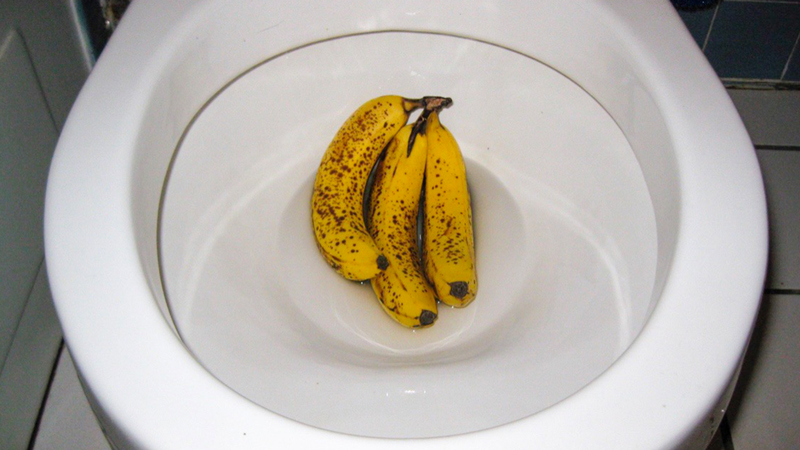Can One to Dispose of Food in the Toilet?
Can One to Dispose of Food in the Toilet?
Blog Article
What're your thoughts about Flushing Food Down the Toilet??

Introduction
Many people are commonly confronted with the dilemma of what to do with food waste, particularly when it involves leftovers or scraps. One common inquiry that arises is whether it's okay to purge food down the commode. In this article, we'll look into the reasons individuals could think about purging food, the consequences of doing so, and different techniques for appropriate disposal.
Reasons why individuals might take into consideration flushing food
Lack of recognition
Some people might not know the prospective damage triggered by flushing food down the toilet. They might wrongly think that it's a harmless method.
Comfort
Purging food down the toilet might feel like a fast and very easy service to taking care of unwanted scraps, particularly when there's no neighboring trash can available.
Laziness
In many cases, individuals might just choose to flush food out of large laziness, without taking into consideration the repercussions of their activities.
Repercussions of flushing food down the toilet
Environmental impact
Food waste that ends up in rivers can contribute to pollution and injury marine ecosystems. In addition, the water utilized to flush food can strain water resources.
Pipes concerns
Purging food can bring about stopped up pipelines and drains, creating costly pipes fixings and inconveniences.
Types of food that ought to not be flushed
Fibrous foods
Foods with fibrous appearances such as celery or corn husks can obtain tangled in pipelines and cause blockages.
Starchy foods
Starchy foods like pasta and rice can take in water and swell, resulting in clogs in pipes.
Oils and fats
Greasy foods like bacon or cooking oils must never be flushed down the toilet as they can strengthen and cause obstructions.
Appropriate disposal techniques for food waste
Using a garbage disposal
For homes equipped with garbage disposals, food scraps can be ground up and flushed with the plumbing system. Nonetheless, not all foods appropriate for disposal in this fashion.
Recycling
Certain food packaging materials can be reused, decreasing waste and minimizing environmental influence.
Composting
Composting is an environment-friendly method to deal with food waste. Organic products can be composted and used to improve dirt for gardening.
The significance of proper waste management
Reducing ecological injury
Proper waste monitoring methods, such as composting and recycling, aid decrease contamination and preserve natural resources for future generations.
Protecting pipes systems
By preventing the practice of flushing food down the bathroom, house owners can prevent costly plumbing repairs and preserve the stability of their pipes systems.
Final thought
To conclude, while it might be appealing to purge food down the commode for convenience, it is very important to comprehend the potential consequences of this activity. By taking on proper waste administration methods and throwing away food waste sensibly, people can add to healthier plumbing systems and a cleaner setting for all.
FLUSH FOOD DOWN THE TOILET?
FLUSHING FOOD CAN CAUSE BLOCKED DRAINS IN YOUR HOME
All of the plumbing fixtures in your home are connected to the same sewer pipe outside of your home. This outdoor sewer pipe is responsible for transporting all the wastewater from your home to the Council sewer mains. Even small pieces of food that go down the kitchen sink can cause problems for your sewer. It should therefore be obvious that flushing larger bits of food, such as meat, risks a clog in either the toilet itself or the sewer pipes. Flushing greasy food is even more problematic because oil coagulates when it cools, coating the interior lining of your pipes.
THE TOILET IS NOT A BIN
Food isn’t the only thing that people shouldn’t be flushing down the toilet. People use the toilet to dispose of all kinds of things such as tampons, makeup wipes, dental floss, kitty litter and even underwear. Water goes to great lengths to educate residents about the high costs and stress placed on wastewater treatment systems simply from people flushing the wrong stuff down the toilet. It costs taxpayers millions of dollars each year, and homeowners thousands in blocked drain repairs.
FLUSHING FOOD IS A WASTE OF WATER
Flushing food is a waste of our most precious resource - water. In June this year Level 1 water restrictions were introduced to protect water supply from drought conditions. Much of New South Wales continues to be affected by prolonged drought with recent figures revealing up to 97 per cent of the state remains in drought. Depending on whether you have a single or dual flush toilet, every single flush uses between five and 11 litres of water. In the current climate this is a huge amount of water to be wasting on flushing food that should be placed in the bin (or better yet, the compost).
https://www.jabplumbingsolutions.com.au/blog/can-you-flush-food-down-the-toilet

As a passionate reader on What Can Happen If You Flush Food Down the Toilet?, I figured sharing that portion was a smart idea. In case you enjoyed our blog entry if you please make sure you remember to share it. Thanks a lot for taking the time to read it.
Need Help? Hire Us Now! Report this page